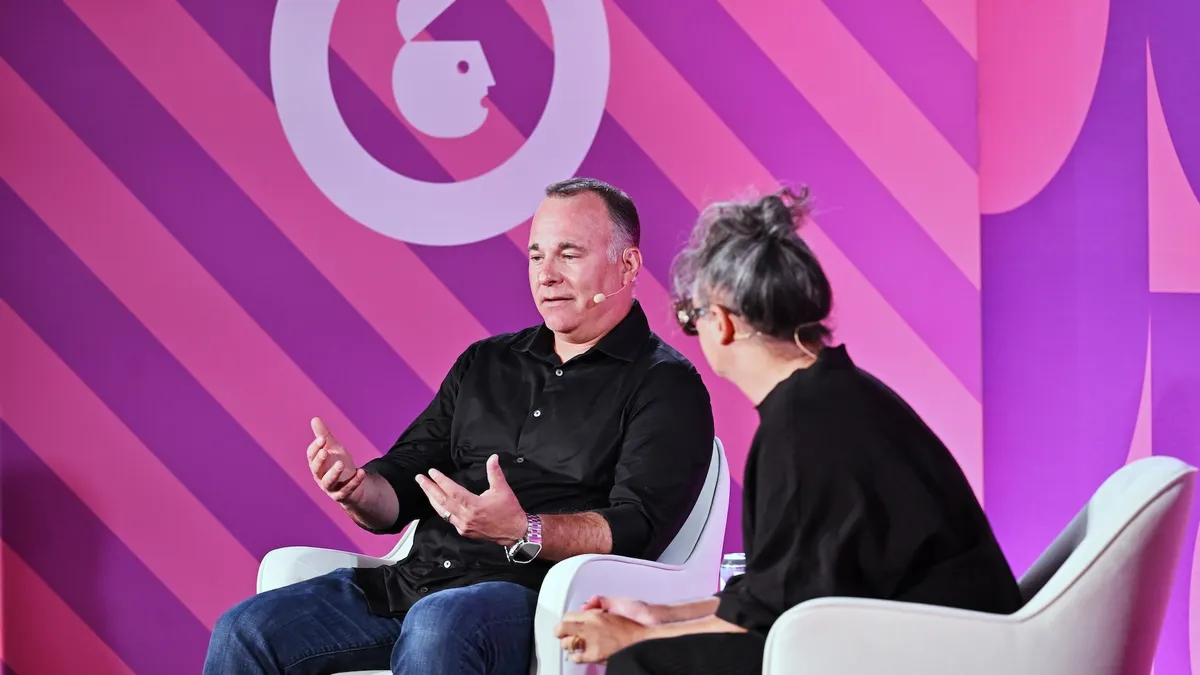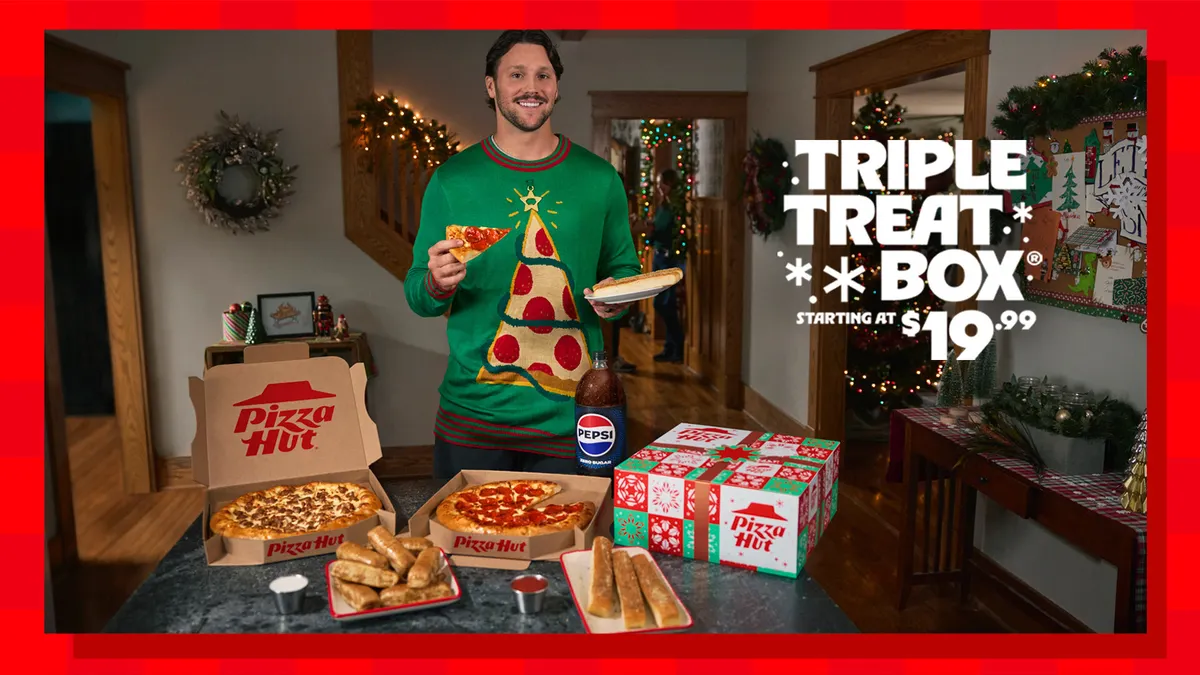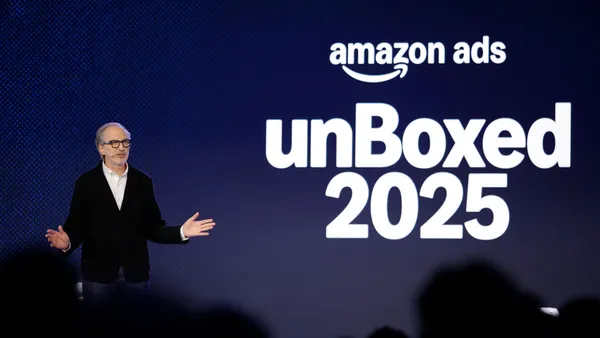What a difference a year makes: In Q3 2024, Amazon saw its third straight quarter of decelerating ad sales growth and used its 2024 UnBoxed conference to announce small-scale changes to its various ad platforms.
Fast forward to 2025, and Amazon’s outlook is quite different. The company’s ad business has seen several quarters of revenue acceleration, hitting 24% year-over-year growth in Q3 2025 as Amazon’s quarterly revenue in the area approaches $18 billion. And at last week’s UnBoxed conference in Nashville, Amazon unveiled a suite of tools and capabilities that — if they work as promised — could change how marketers and agencies do business.
Central to Amazon’s bid to advertisers are two new capabilities with names that speak to the simplicity and centrality it hopes to provide. The company introduced full-funnel campaigns and revamped its Campaign Manager, uniting sponsored ads and its demand-side platform in a single, artificial intelligence-powered ad hub. Amazon also continues to step up its streaming TV play, demonstrating how its connected TV prowess has driven advertiser outcomes.
“We're doing more than just building tools,” said Kelly MacLean, vice president of engineering, science and product for Amazon Ads. “We're building a one-stop shop, empowering you to make smarter decisions to drive better results across the entire advertising journey.”
Old problems, new tools
The new full-funnel campaigns offering, launching next year, is an agentic AI tool that helps advertisers automate campaigns across sponsored ads, display ads and streaming TV. The tool draws from Amazon’s wealth of first-party signals and an Authenticated Graph that it claims reaches 90% of all U.S. households.
“Full-funnel campaigns are the simplest way to grow brand awareness, attract new customers and drive conversions. It's early, but we're super excited about what's possible when you combine Amazon Ads’ unmatched supply and signals with the capabilities of AI,” said Paul Kotas, senior vice president of Amazon Ads.
Powering full-funnel campaigns is Ads Agent, an AI agent that helps advertisers plan, launch and optimize campaigns by automating time-consuming tasks, including campaign targeting, media planning and data analysis. AI is also at the heart of Creative Agent, a previously announced creative tool that can now create streaming TV ads, and the revamped Campaign Manager, an offering that accelerates a shift in digital advertising.
“Platforms are automating the low-value, executional work of campaign setup, bidding and optimization, which means agencies can no longer differentiate on operational efficiency alone. The winners will be the firms that move up-funnel — into strategy, creative intelligence, cross-channel orchestration and real measurement,” said Ted Iobst, president of performance marketing agency Stellar, in emailed comments.
While Amazon is using AI to try to make campaign creative and deployment easier and more efficient, it is also using the technology to drive outcomes — an increasingly crucial development for marketers facing smaller budgets and burnt-out consumers. To do so, Amazon has worked to improve its Brand+ and Performance+ tools with enhanced AI models and new consideration tactics.
Looking to reach customers across fragmented touchpoints during the tax season, H&R Block combined its data with Amazon’s, creating seed audiences for retargeting and optimization. The use of Brand+ and Performance+ helped bring new customers into the funnel while motivating those close to conversion to make a purchase. The result was a 144% lift in full-funnel conversion rate and a 35% improvement in cost per acquisition, MacLean said.
It’s not TV, it’s Amazon
Amazon’s accelerated growth as an advertising powerhouse has mirrored the development of Prime Video as an ad-supported streaming video platform that can better compete with legacy publishers and fellow tech giants like Netflix. At UnBoxed, Amazon announced that Prime Video now has an average monthly ad-supported reach of more than 315 million viewers globally — up from 200 million in April 2024.
Along with boosting Prime Video, Amazon has spent the last several months integrating other publishers into its platform and claims to be the only place that advertisers can access all premium streaming TV and audio under one roof. At UnBoxed, the company announced a way for advertisers to unlock this scale, allowing them to negotiate both standard streaming TV deals and those with premium streaming publishers in its Inventory Hub. Complete TV, a previously announced tool that helps advertisers plan, manage and optimize their streaming TV investments, is now also available to all advertisers.
“Thanks to our signals, powered by AI, you can easily manage and meet all your upfront commitments across every publisher. You can incorporate your linear TV data to see the full picture across linear and streaming TV reach for a complete view of audience overlap,” MacLean said. “You won’t find this combination of intelligence, flexibility and privacy anywhere else in the industry.”
Amazon’s play in streaming TV comes as the channel now represents more than 44% of overall TV viewing time in the U.S., surpassing broadcast and cable combined, per Nielsen data. At the same time, streaming TV is increasingly sold programmatically, with 30% of non-YouTube streaming sold that way and 80% of programmatic activated using biddable deals, according to data cited by Lauren Bernard, a principal technical product manager for Amazon Ads, during a panel discussion at UnBoxed.
“The shift to programmatic is laying the groundwork for a world where advertisers have more flexibility, optimization levers and control, forecasting a future where streaming TV is used to drive actual business outcomes,” Bernard said, while admitting that framing streaming TV as a performance channel was “a bit generous.”
“There's a reason that 30% and not 100% of streaming TV ads are sold programmatically today. Operating in the new world, it's tough, and our work is not yet done to resolve advertisers pain points,” she added.
Driving outcomes
Streaming TV still has issues around fragmentation, inefficiency and complexity. Amazon has worked to address fragmentation through its publisher deals in its DSP, with campaigns leveraging Amazon’s holistic streaming TV solutions seeing 1.4 times higher incremental reach, 45% higher detail page view rates and 26% better purchase rates. Moves like its deal with Roku have helped address inefficiency, with authenticated reach driving 42% higher unique reach at the same budget, 26% less frequency per user and a three-times return on ad spend, per early testing.
To address the complexity of streaming TV, Amazon has built tools to help TV buyers plan, manage and measure their investments, through solutions like Complete TV and full-funnel measurement that brings together Amazon Marketing Cloud insights with those from third-party vendors including Nielsen, VideoAmp, Samba TV, Circana and others.
A Lay’s case study presented at UnBoxed by Bernard demonstrates how Amazon’s streaming TV can drive outcomes. By consolidating Prime Video with streaming TV apps across the open internet in Amazon DSP, leveraging Amazon Marketing Cloud and frequency management capabilities, the campaign was able to deliver 133% higher purchase rates, 79% higher incremental reach and a 9% lift and brand awareness. It also saved 3% of the media budget through reduced platform fees.
In another example, appliance company SharkNinja teamed with Amazon to help drive a “big bet” around its Ninja Crispi air fryer, explained Dave Kersey, the company’s global head of media. SharkNinja applied authenticated reach through Amazon DSP, driving a 30% reduction in cost per weekly household reach and a 12% reduction in CPM.
“We needed to have precision in the marketplace, and we needed to make sure that all of our dollars are being spent as effectively as possible,” Kersey said during a panel discussion. “[The results] prove that our model of looking at the right layers of signals, as well as working within the right DSPs and the right partners, can give us that efficiency, but also that incredible business impact, as well.”























